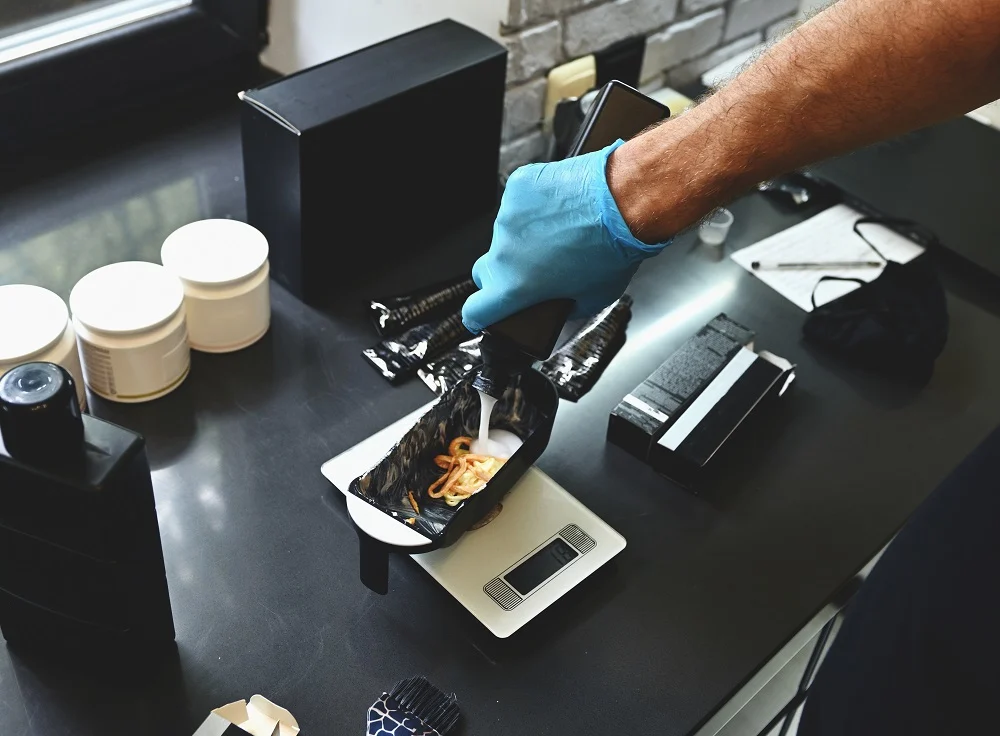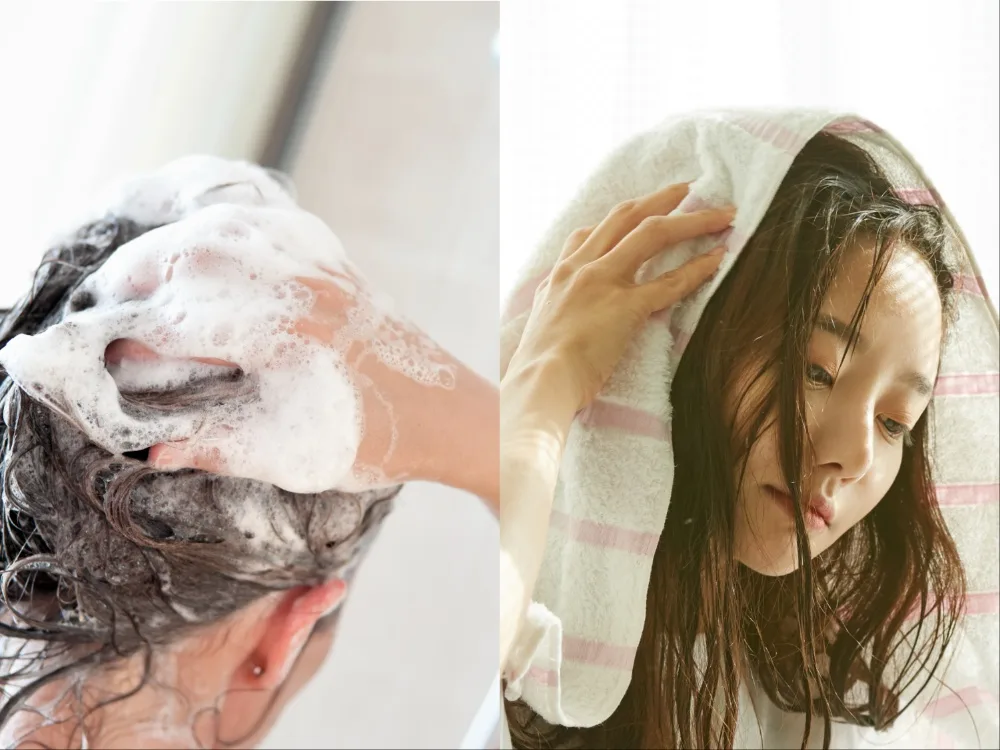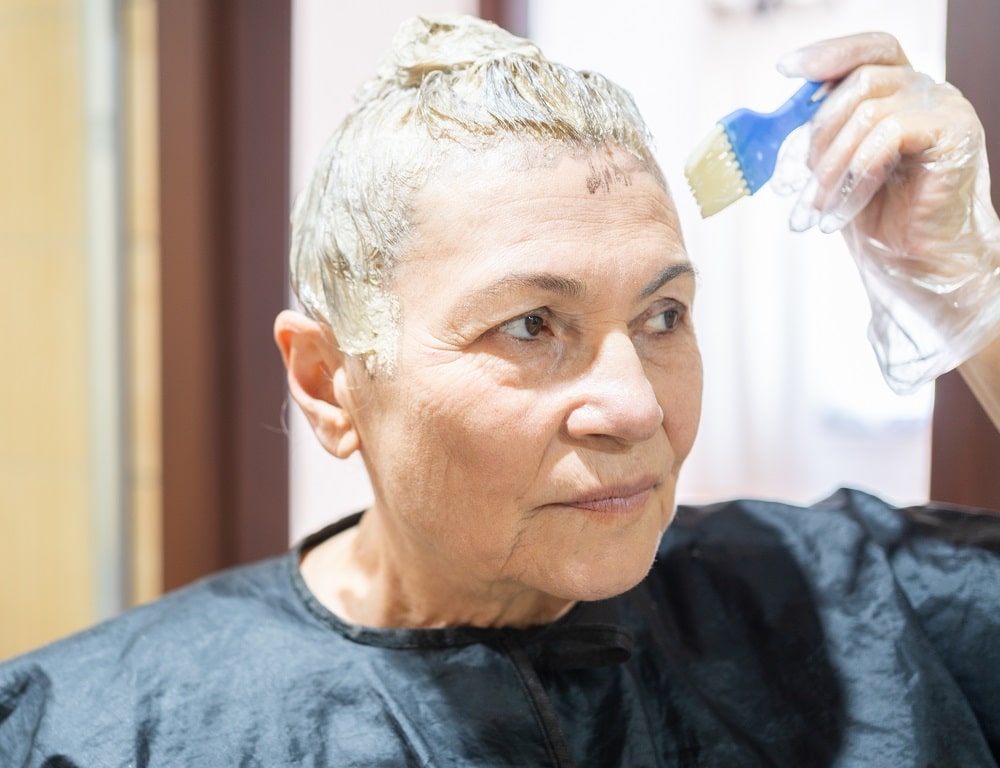
5 tricks for dyeing durable gray hair that work
It’s no secret that gray hair can be more resistant to color, which can be frustrating for anyone trying to cover up gray. The good news is that permanent gray hair coloring is possible if done right.
There’s nothing like looking in the mirror and seeing that first gray hair! Although some women embrace their grays right away, not all are ready to let them take over once they emerge.
You may have noticed that your gray hair has not only a different color but also a different texture. Sometimes, gray hair can be straight, curly or smoother than pigmented hair. The truth is, gray hair reacts to everything differently, so you may feel like you’re relearning how to care for your hair.
In this article, we will discuss how to dye resistant gray hair, as opposed to normal and pigmented hair. There are some adjustments that need to be made when coloring gray hair, but with the suggestions in this article, you’ll be able to dye those stubborn grays!
How to dye durable gray hair
Here are the suggestions for dyeing durable gray hair that we will discuss in this article:
- Use a permanent hair dye darker than the desired result in order to dye color-resistant gray hair.
- Use the right key to dye durable gray hair.
- Prepare your durable gray hair for the dyeing process.
- Apply hair dye in the right way for full saturation of resistant gray hair.
- Allow the color to process for the appropriate amount of time to fully cover resistant gray hair.
#1. Use a permanent hair dye darker than the desired result in order to dye durable gray hair

Using a color darker than what you’re aiming for may seem a little scary and a little risky, but choosing a darker color is usually the best way to dye gray hair.
Because gray hair is so durable, it may not absorb the full pigment of the color you apply, so it may turn out a little lighter than you want. There is nothing worse than that “Hot Roots” Or roots that are strangely lighter than the rest of the hair.
As you can see from the image below, the section of hair is just below the gray roots Lighter than the rest of the hair. It looks like the wrong color was used the last time the gray roots were dyed. A darker color will be Fit in much better with the rest of the hair.
The image below describes why hair stylists call hair color “levels”. Each level is a basic measurement of darkness or depth in color. At each level there can be countless variations of tones.
The level system goes from 1 to 10 from darkest to lightest, so level one would be the darkest black, and level ten would be the lightest blonde. Let’s say you want to dye your grays to reach level six, any shade (brown, red, gold, blonde, ash, etc.).
Instead of using a level six color, you’ll want to use a level five. Level five carries the same pigment, but is one level darker than six. When applying level five hair color to gray hair, the end result is closer to level six. Make sure you get permanent hair color, not semi-permanent or semi-permanent.
Now, if your gray hair has been particularly stubborn and resistant to color in the past, even with a color one level darker than your desired result, you may need to try going down two levels instead of one. This is not a “one size fits all” equation, so you may need to make some adjustments.
After you’ve chosen the right tube of hair color, it’s time to get your key!
Another tip: Some brands of hair dyes have specific color lines designed to cover permanent gray hair. These can be very helpful for covering those grays, but may not come in all the shades or variations you want.
#2. Use the right key to dye durable gray hair

Choosing the right permanent hair color is only half the battle. The key you use with the color is just as important.
But, not sure what a key is? In simple words, a Hair color developer is a product containing hydrogen peroxide. This basically opens the cuticle, or the outer barrier, of the hair and allows the color to penetrate into the core of the hair.
Without a developer, you simply coat the outside of the hair with pigment that can be washed off instantly. That’s why it’s so important to remember to get a key along with your color.
Many color lines also carry their own developers. It is recommended to use the color and key from the same color line, although I must say that sometimes stylists break this rule. Oops! I told one of our secrets.
When you select a key, you may notice different numbers on each of the bottles, such as 10, 20, 30, and 40. On some bottles, the number may be after the term “vol.” or “volume”. These numbers represent the volume or strength of a key.
Developers with a volume of 10 are mainly used to apply color to non-resistant hair, and developers with a volume of 30 or 40 are usually used to lighten hair. The sweet spot for gray hair is 20 volume.
Using a 20 volume developer is ideal for allowing permanent hair color to penetrate into stubborn, gray hair and precipitate color, without causing unnecessary damage to the hair. So, when choosing the key to cover those grays, reach for the bottle with the big one 20 About that!
Another tip: Be sure to read the instructions on the paint tube or box that indicate the proper ratio of paint to key. For example, 1:1 means equal parts color and key, and 1:2 means you should use one part color to two parts key.
#3. Prepare your durable gray hair for the dyeing process

Now that you’ve chosen the perfect color and the right key, you might be eager to mix and match it. But, wait a minute!
The first thing you want to do, even before you apply the hair color to your hair, is to prepare your gray hair to go through the coloring process. It’s very simple! Just make sure your hair is clean and dry before you apply the color.
Why is this so important? Well, gray hair is already resistant, so you want to eliminate any other barriers that might prevent hair color from reaching your hair core. These barriers can include natural oils, skin flakes, dirt, or just pollutants from the air.
Before you dye your hair, be sure to clean it thoroughly with a clarifying shampoo. Most clarifying shampoos contain sulfates, which I would only use occasionally, but there are also more natural clarifying shampoos that contain apple cider vinegar or charcoal.
No matter what you use, you want to make sure you shampoo your hair more than once to build a good lather and clean your hair thoroughly.
After you have shampooed your hair, you can apply a light conditioner, but only for detangling purposes. Don’t let it soak into your hair for too long. You can apply a deep conditioning treatment to your hair after coloring it.
Normally, I’d say wash off conditioner with cool water, but if you’re going to color your hair, wash off conditioner with warm/warm water.
By washing with hot water, you leave the cuticle, or the outer barrier of the hair, unsealed, which will allow the color to penetrate deeper into the hair.
After you have thoroughly cleansed and lightly conditioned, squeeze the excess water out of your hair and towel dry. At this point, you can blow dry your hair or let it air dry.
Either way, your hair should be completely dry before you add color. When there’s water in your hair, your hair isn’t able to absorb color like it would when it’s completely dry.
Also, it is important that you do not apply any product to your hair before you dye it. You want the hair color to be the first thing that touches your hair after it dries.
#4. Apply hair color the right way for full saturation of resistant gray hair

After you’ve cleaned, lightly toned, and blow-dried your hair, it’s time to apply the carefully blended color!
Of course, you don’t want to just slap it on and call it good. Because gray hair is extremely resistant to color, you’ll need to apply the color in a way that thoroughly evens out every strand of gray hair.
Depending on the specific paint you are using, you will need a paint mixing bowl or applicator bottle. Either way, you’ll need a color brush to apply the color thoroughly to your hair.
With a thicker, cream hair color, you’ll use a mixing bowl and simply dip the color brush into the bowl before brushing the color over your hair. With a thinner liquid-based color, you can apply the color directly to your hair with a bottle applicator and brush the color to the desired part of the hair with the color brush.
Here is the step-by-step process you should follow when coloring your permanent gray hair:
- Divide your hair into four sections (two at the front and two at the back). You can tie or tie these pieces in place.
- Apply the color to the perimeter of your hairline, then to the perimeter of each of the four sections.
- Start applying the color at the back of your head, and work your way to the front. Be sure to apply the dye to very small sections of hair. After applying the color to a section of hair with your applicator bottle and/or color brush, use your fingers (with gloves of course) to squish and rub the color into your hair, completely saturating it with color.
- Use a medium toothed comb to comb the color through the hair.
- After you have finished applying the paint, put on a plastic cap. This will prevent the product from drying out while processing. It will also contain the heat from your head, which can help with the color rendering.
- Start your timer!
In the next section, we’ll discuss how long you should let the color go over your gray hair.
#5. Allow the color to process for the appropriate amount of time to fully cover resistant gray hair
Once you’ve finished applying the paint, it’s time to start the timer. (Do not start the timer when you start applying the color.) Of course, it is best to consult the instructions for the specific color you are using, but there is usually room for adjustment during processing.
But, if the instructions specifically state that the color should not be left on for a certain amount of time, listen to those instructions.
For a typical permanent coloring process on pigmented hair, I will usually leave the color on for 30 to 35 minutes.
However, we know that gray hair is a bit more stubborn than pigmented hair, so it takes longer to process. For this reason, I will leave permanent hair color on gray hair for about 45 minutes.
Typically, permanent hair color (no lighteners or bleaches) will stop processing after about 40 to 45 minutes when you use a 10 or 20 volume developer. So to dye those grays, I say leave the dye on for the maximum amount of time.
Another tip: After finishing the color processing, wash it with a mild shampoo and cool water. Apply a deep moisturizer, let it sit for at least 10 minutes, then rinse with cool water. Using cool water will help your hair seal in the dye. Hot water will wash more color out of your hair.
In conclusion
Gray hair can be stubborn, but it’s not invincible! If you are planning to dye your gray hair, know that it can be done and that the results can be absolutely amazing if you follow the suggestions in this article. You’ll rock your silver-free head of hair with confidence!
Main things you should know:
- Use a permanent hair color that is one level darker than the desired results.
- Use a 20 volume key with permanent color to maximize your results.
- Prepare your gray hair for coloring by thoroughly cleaning and drying it.
- Apply the color to your grays so that it fully saturates every strand of hair.
- Let your color process for 45 minutes (or the maximum time allowed by the instructions) to cover the grays well.